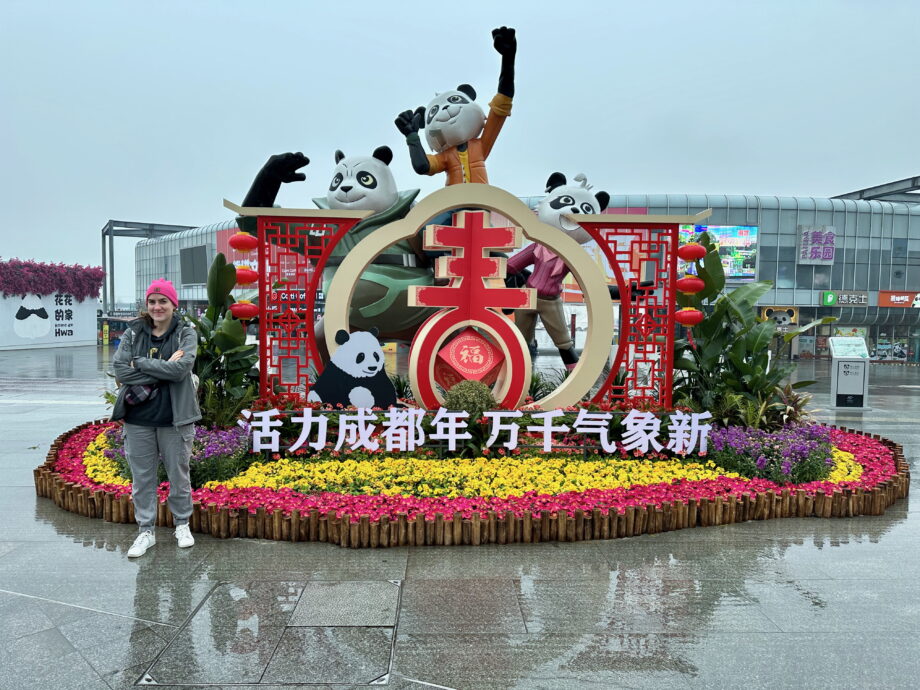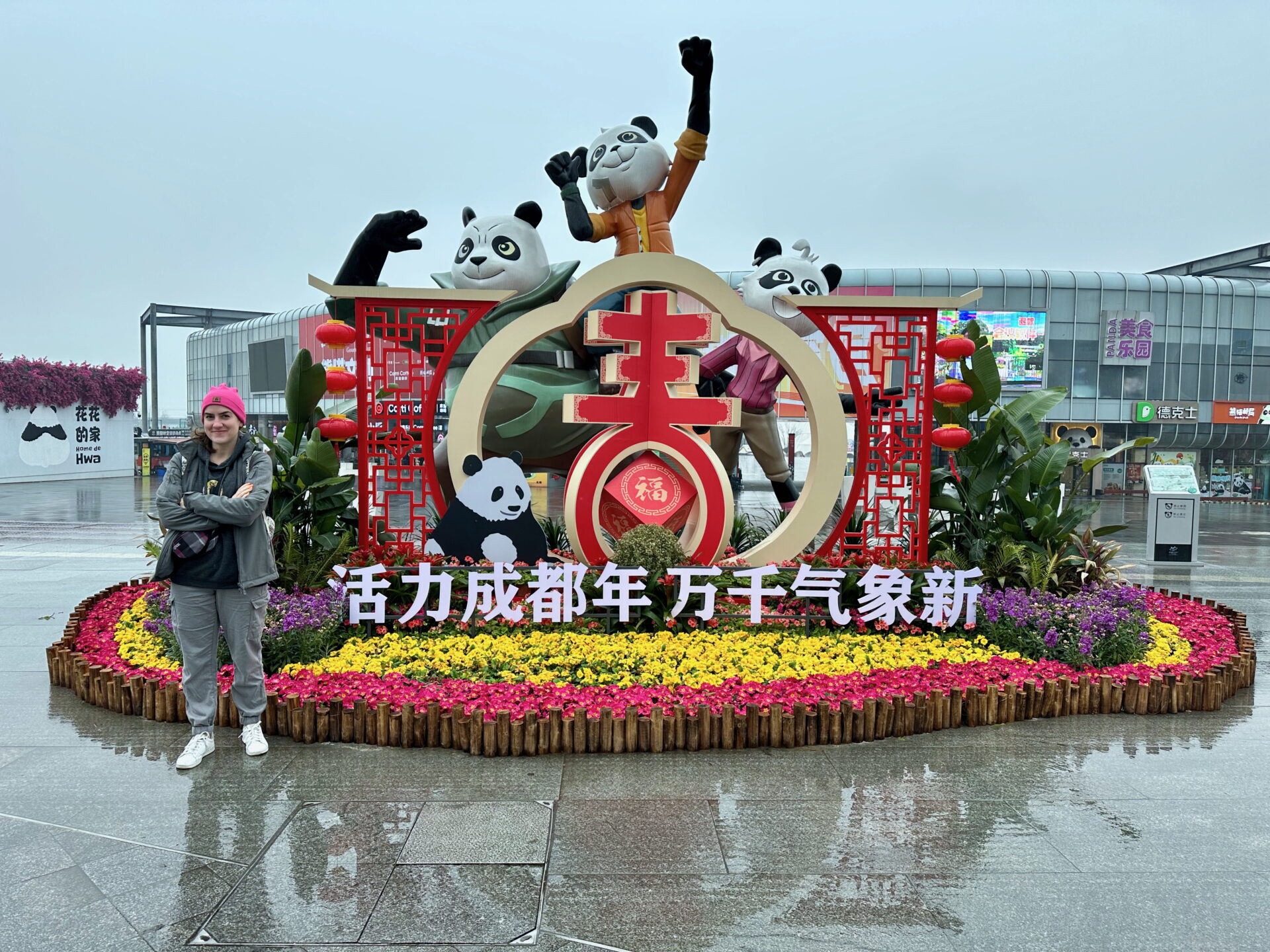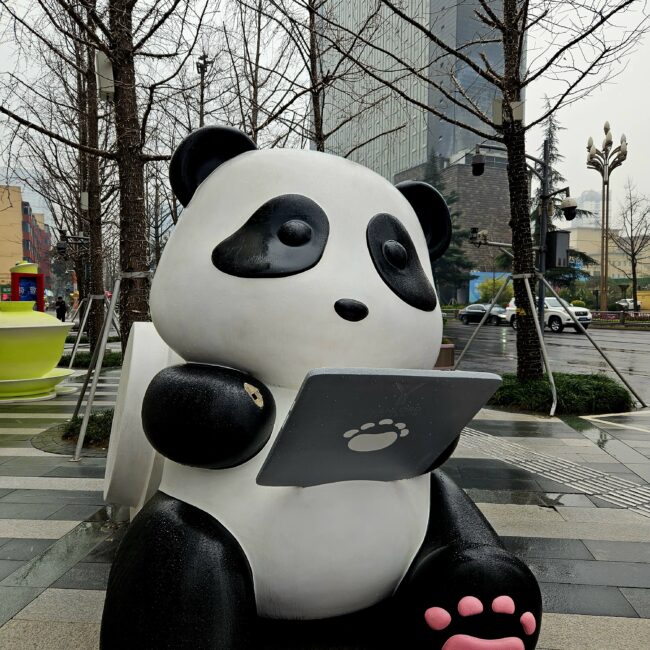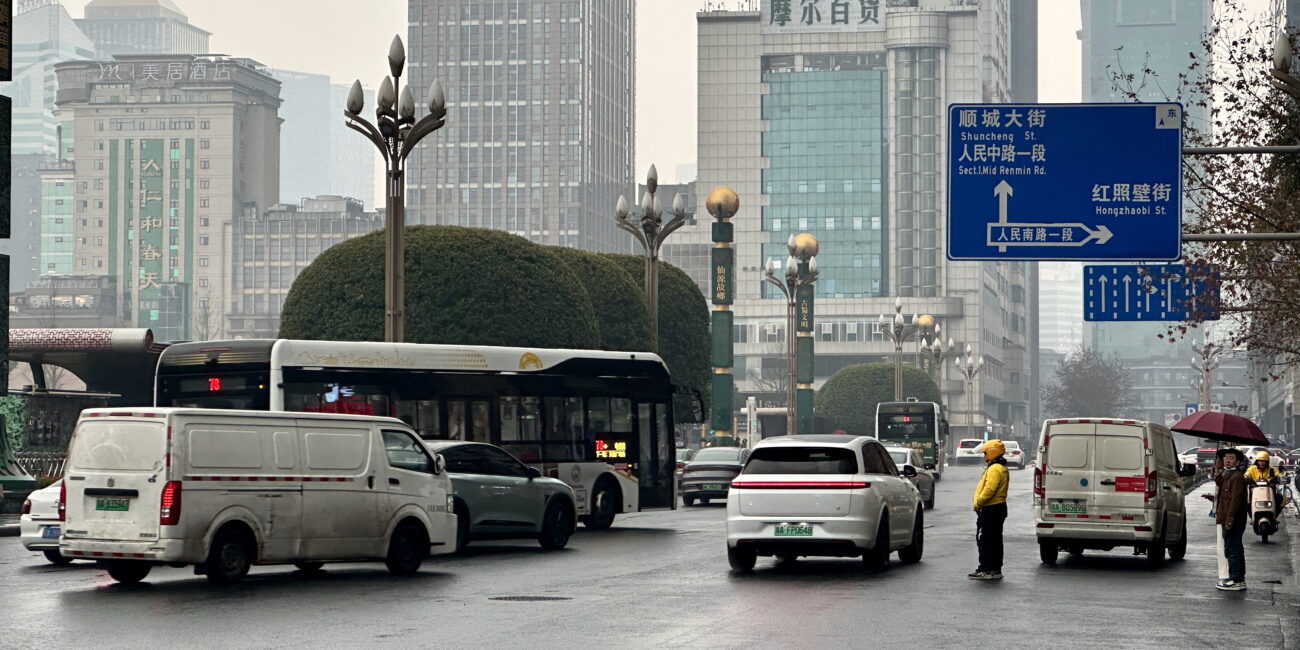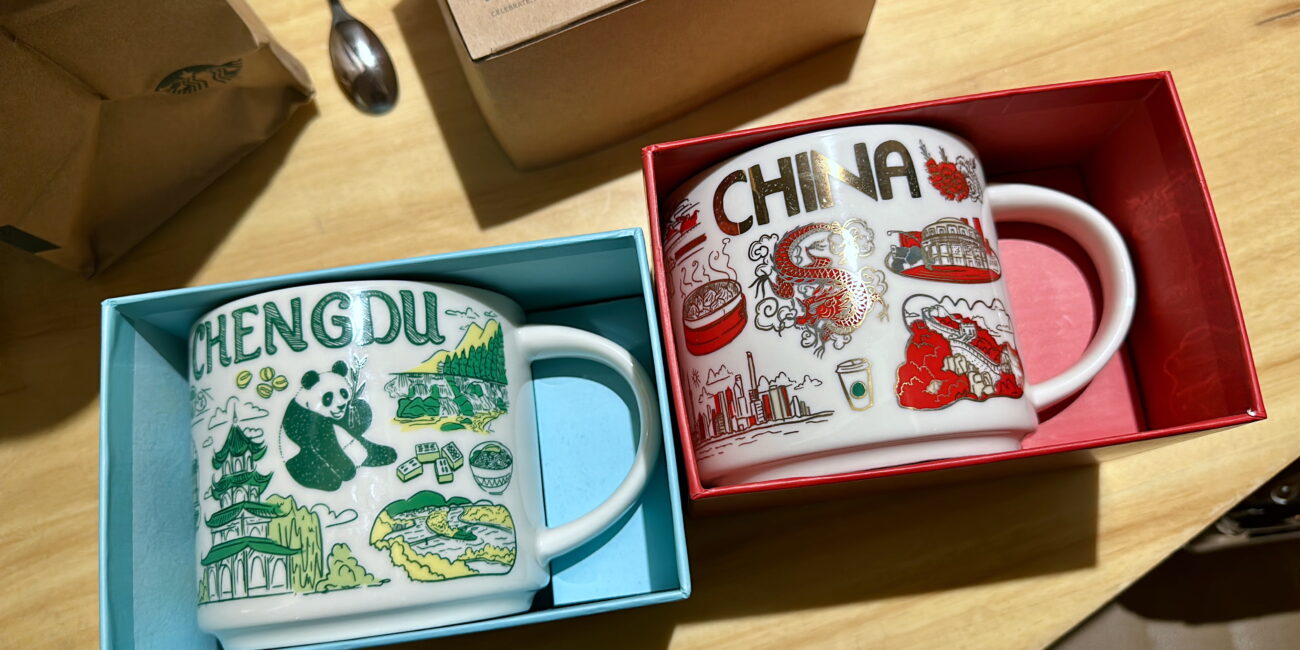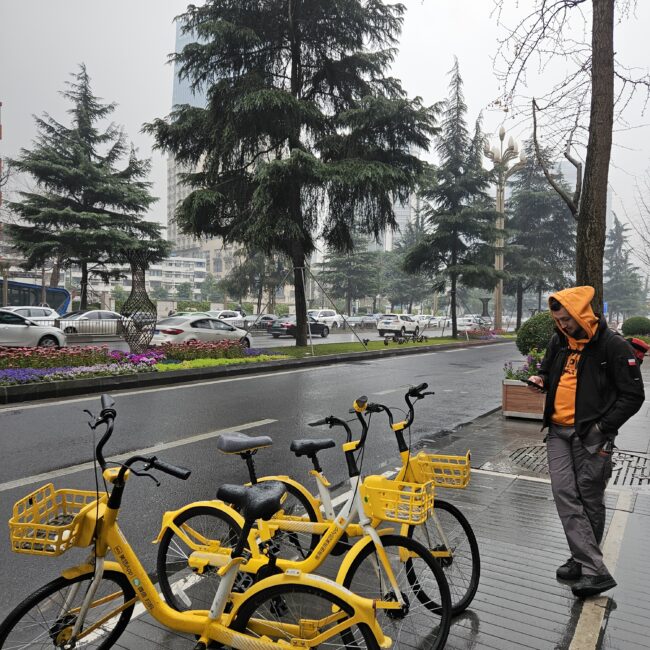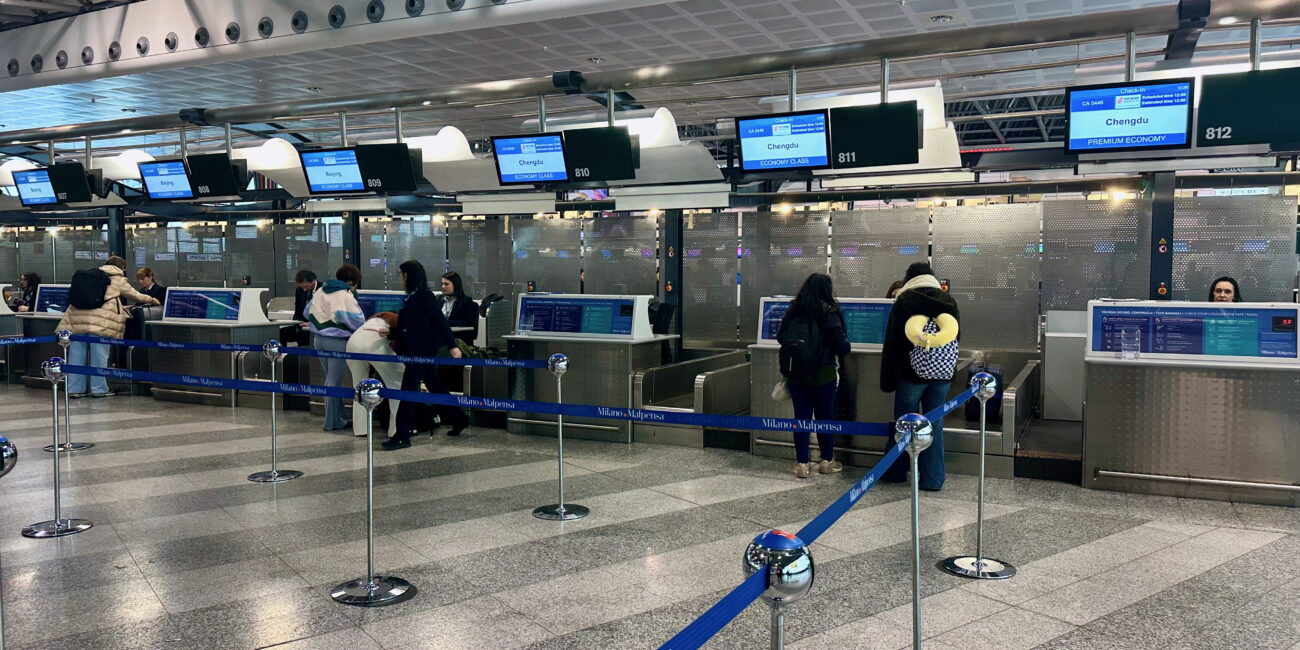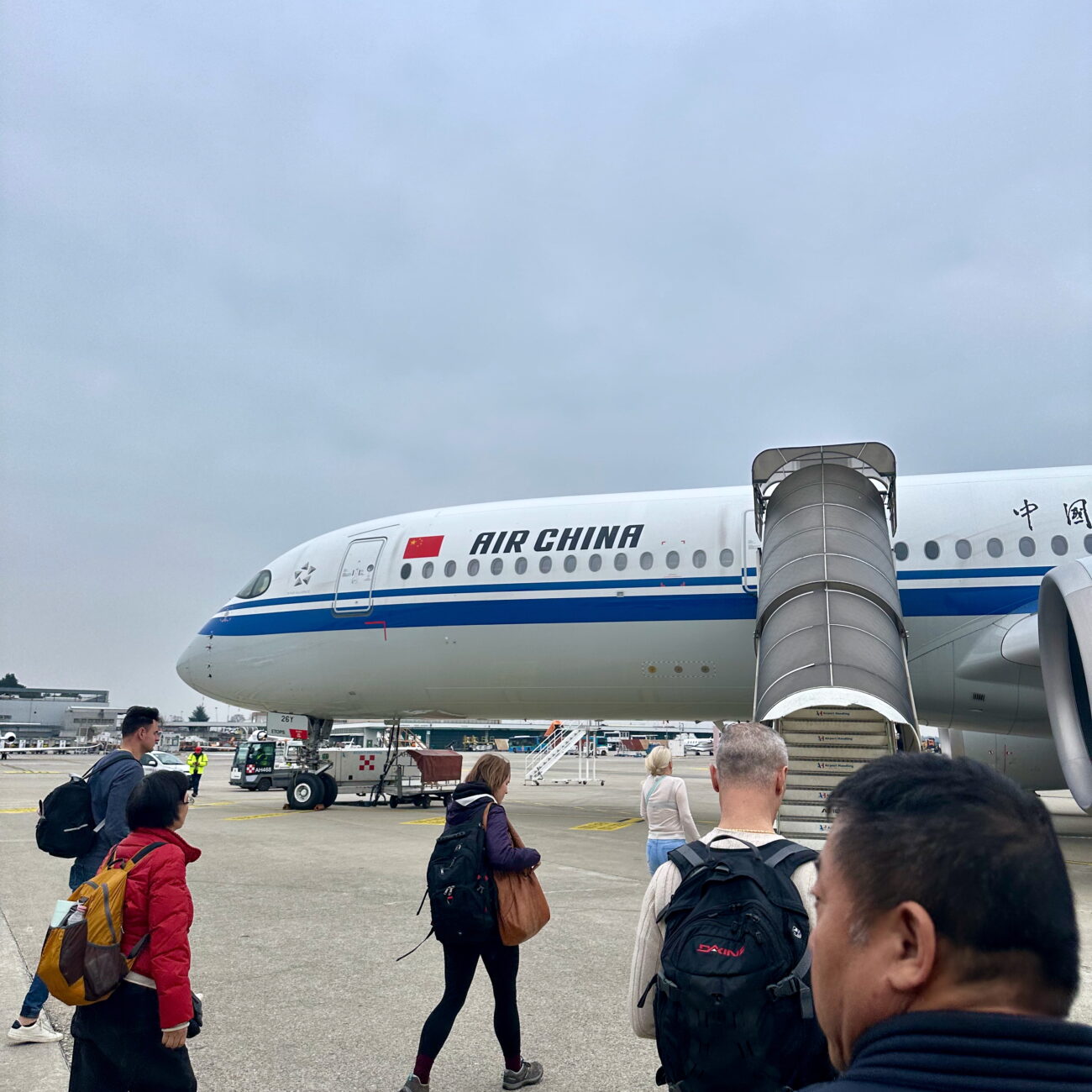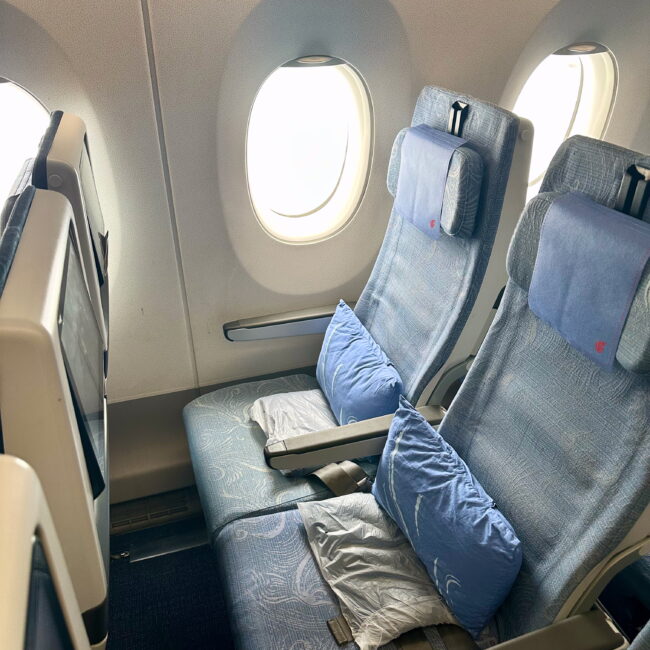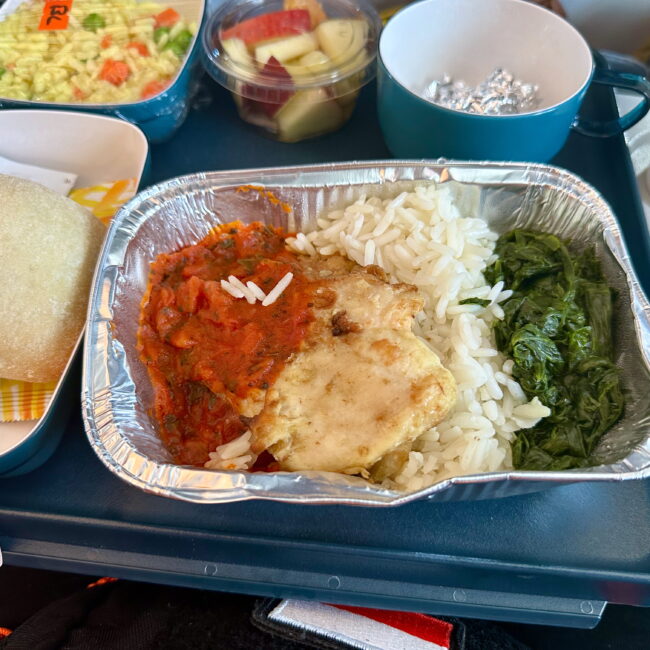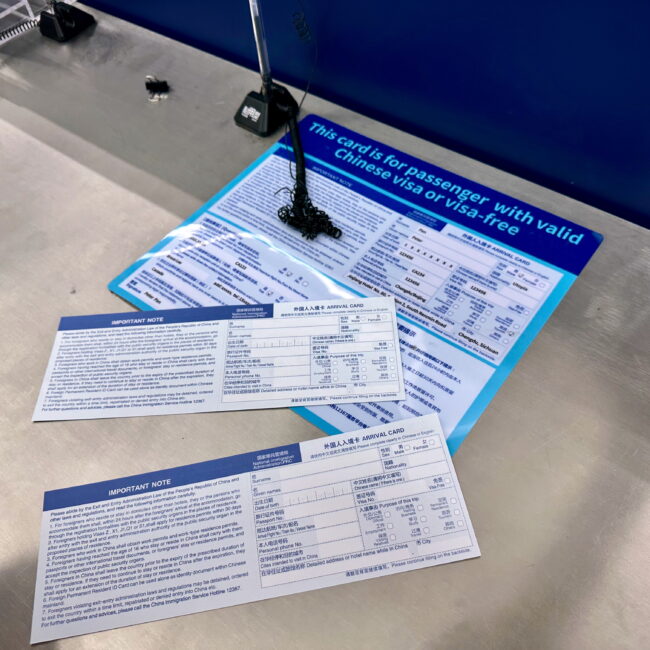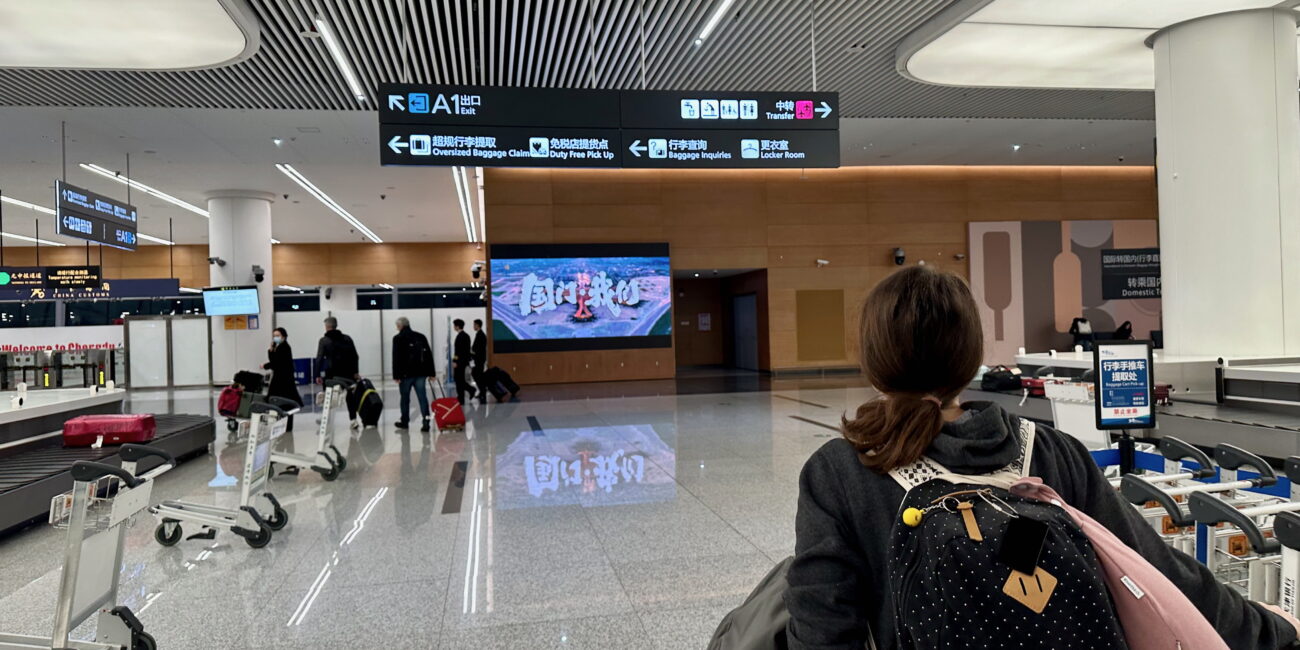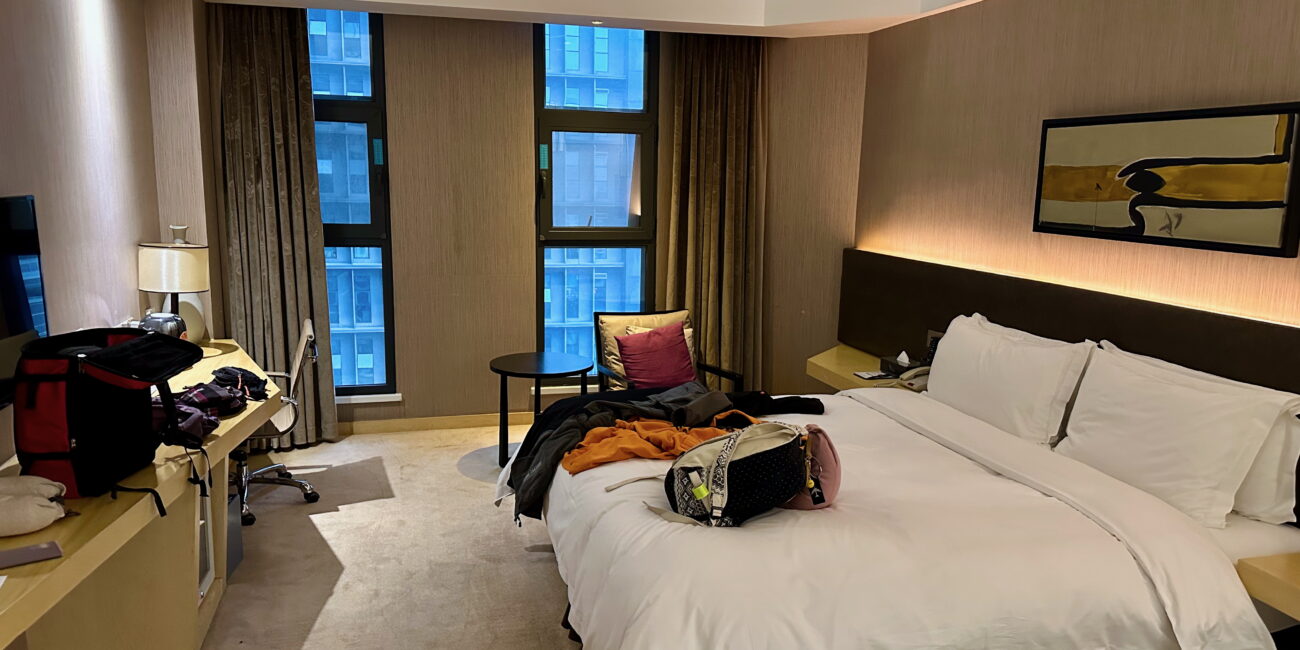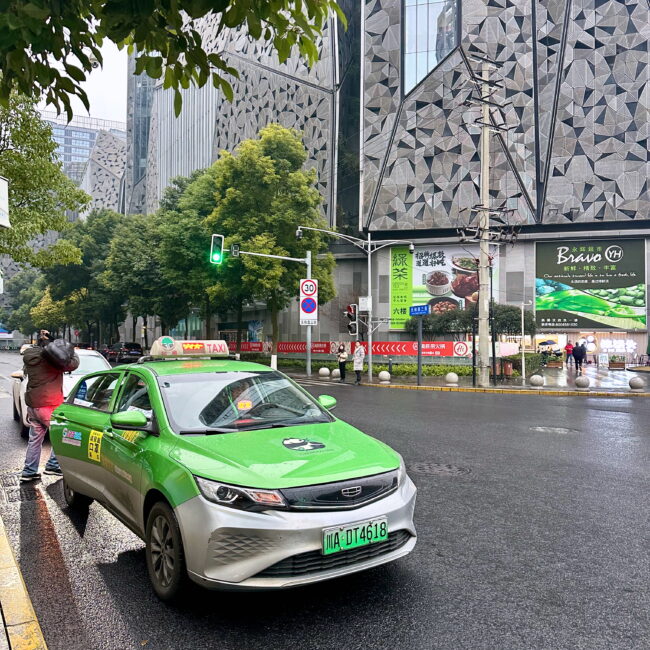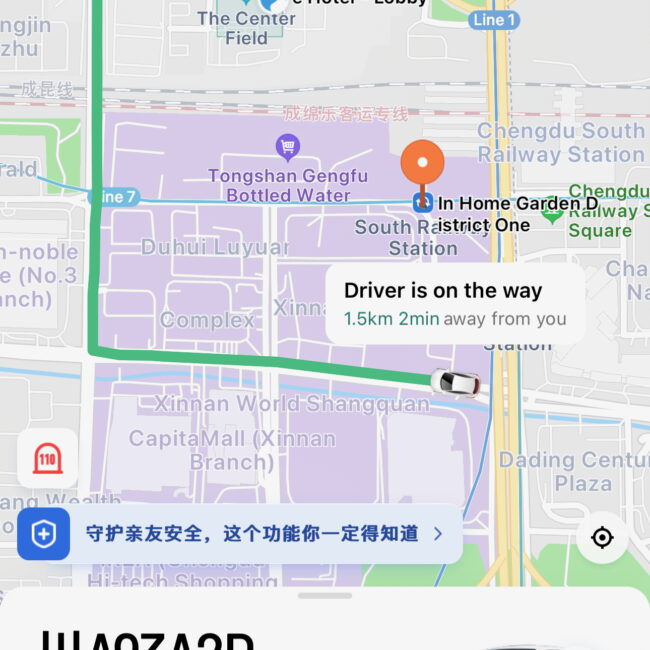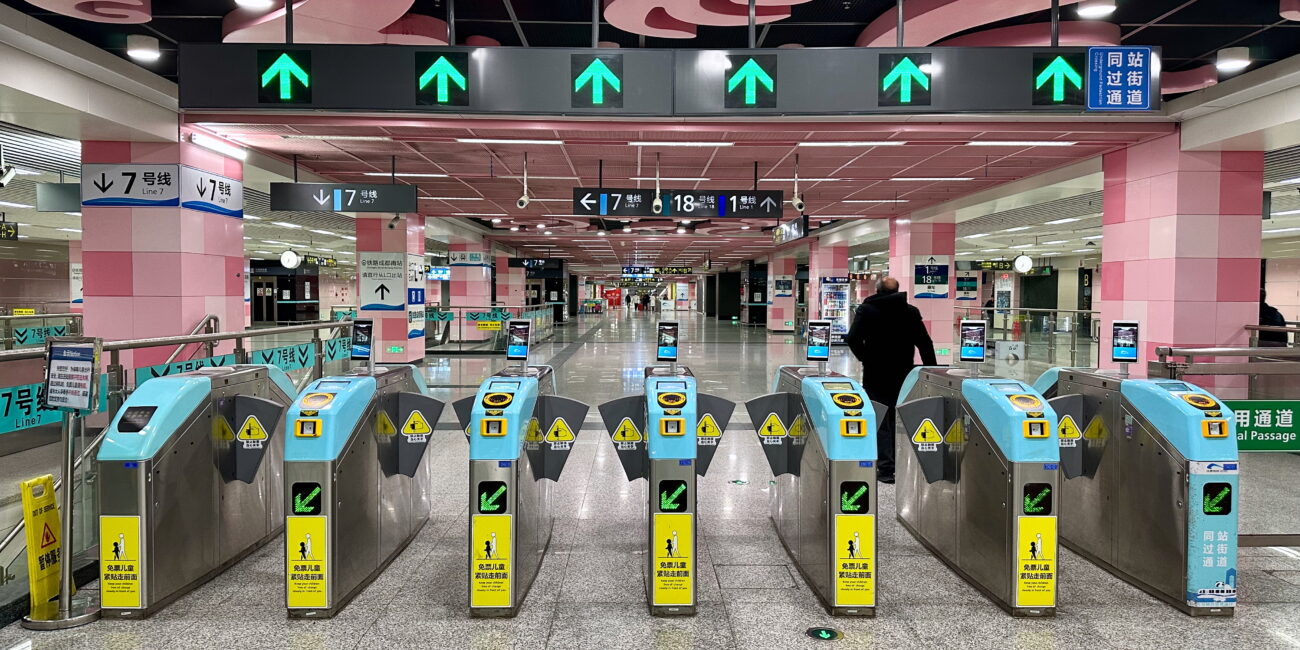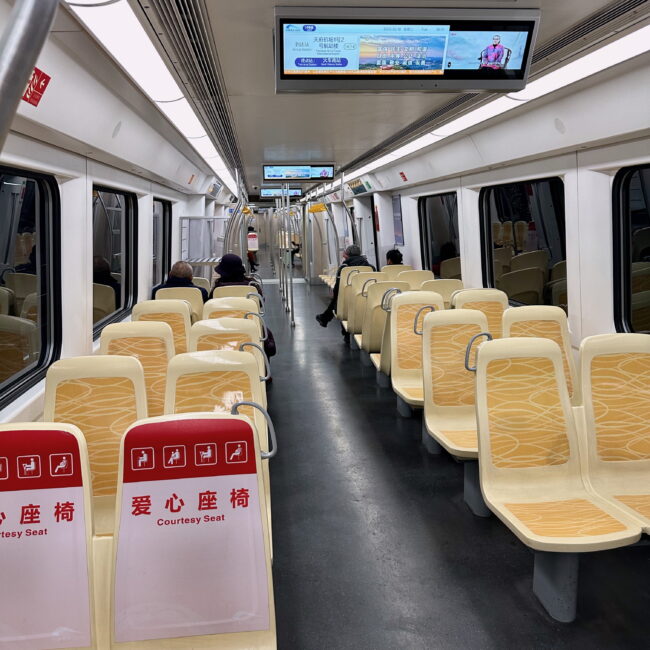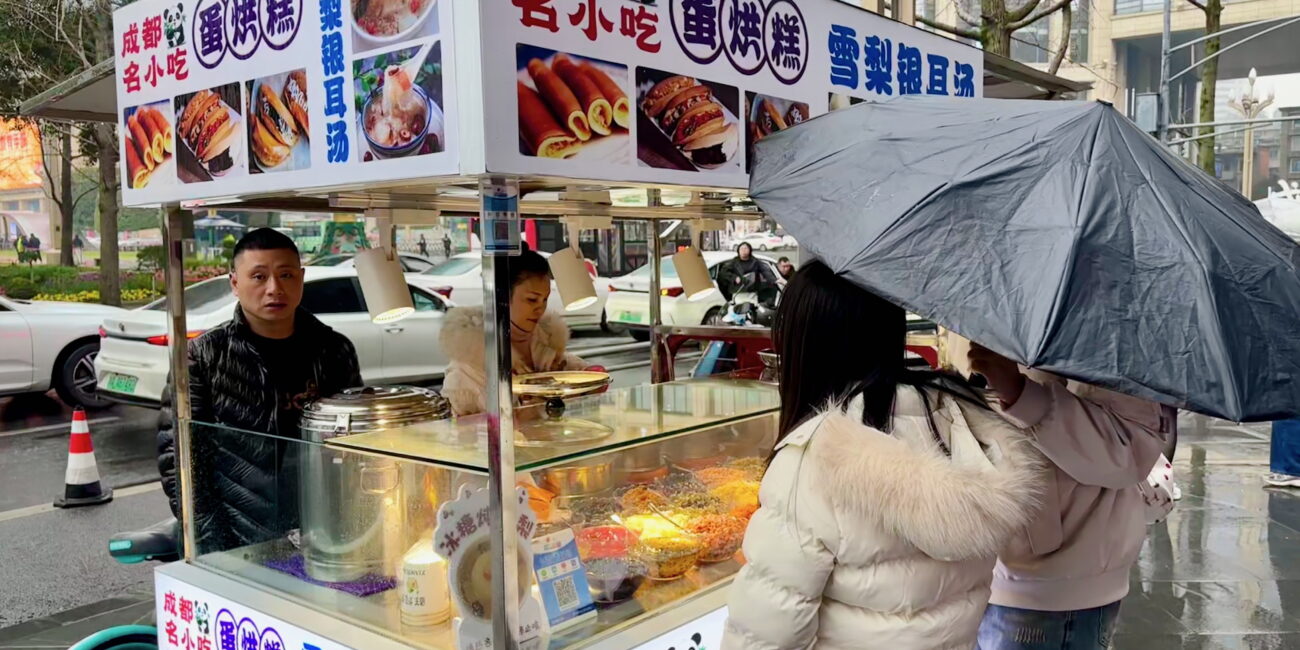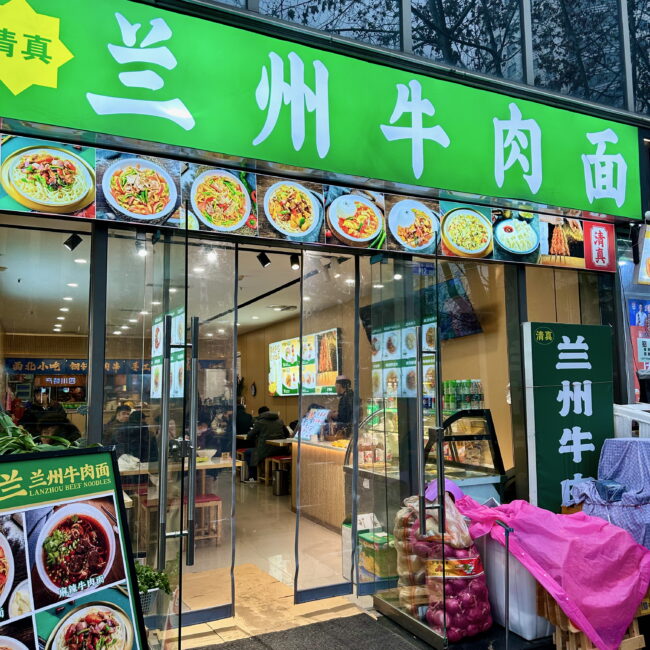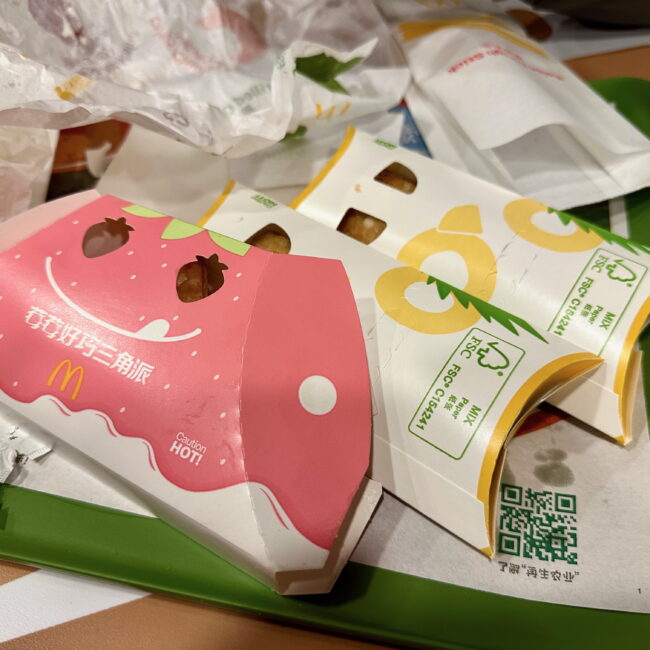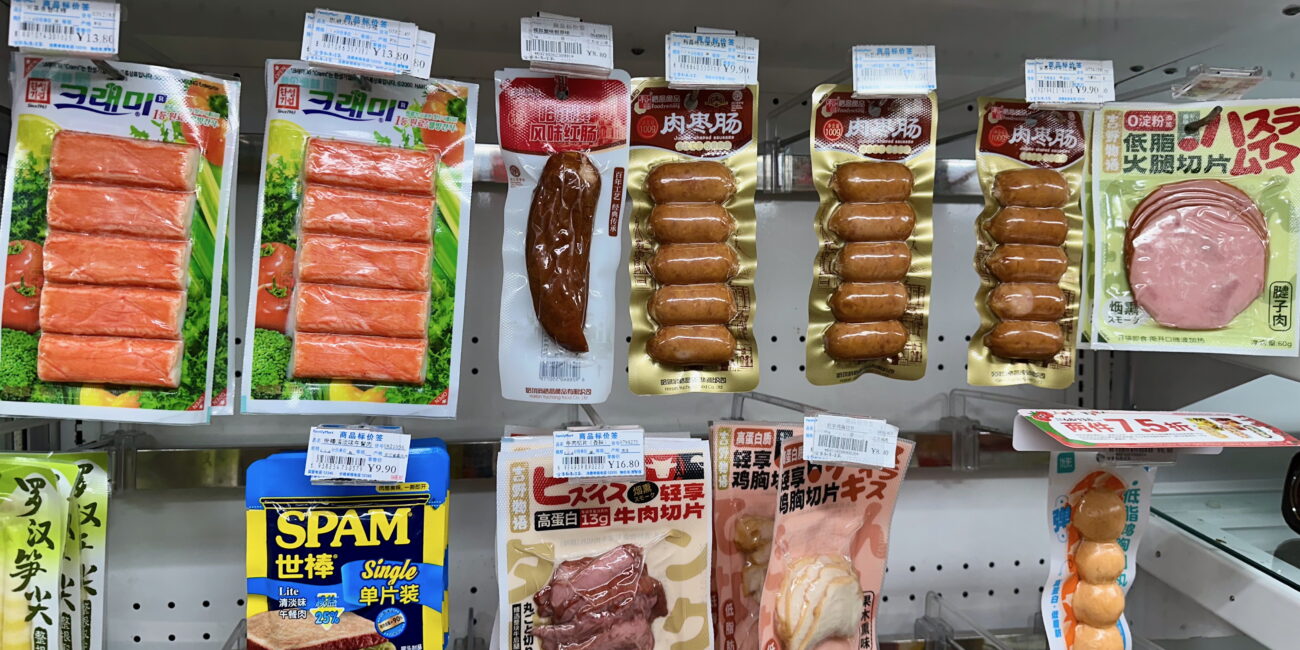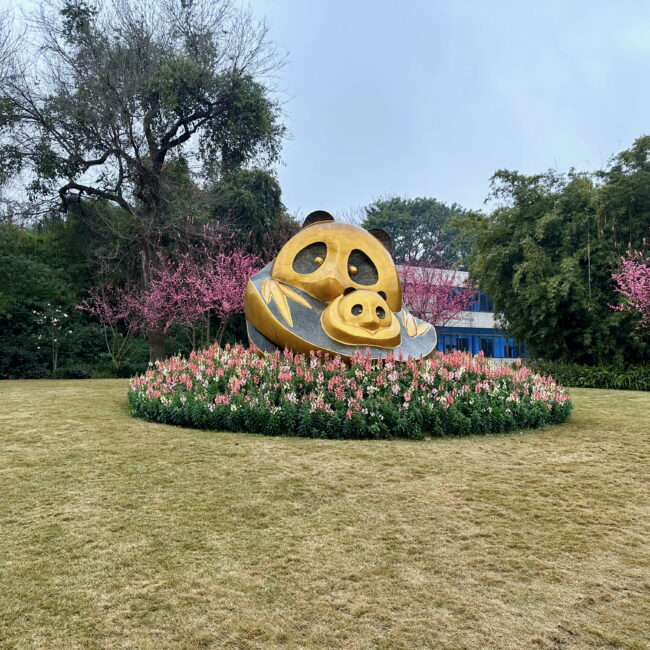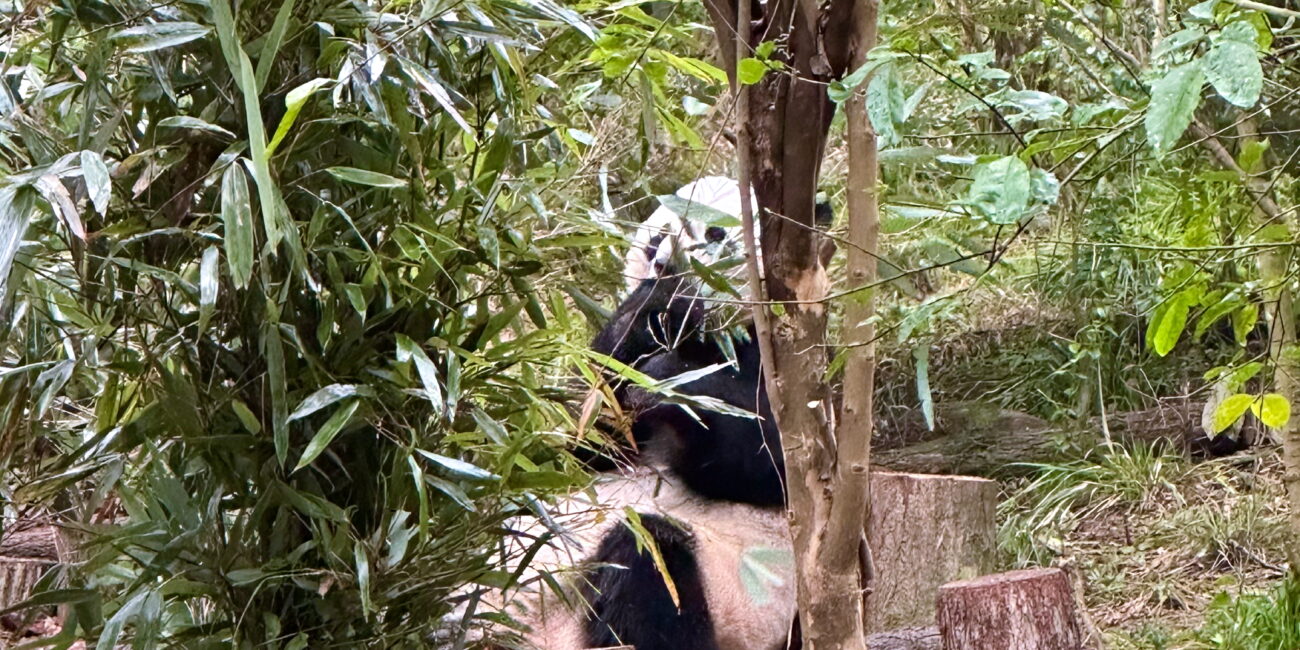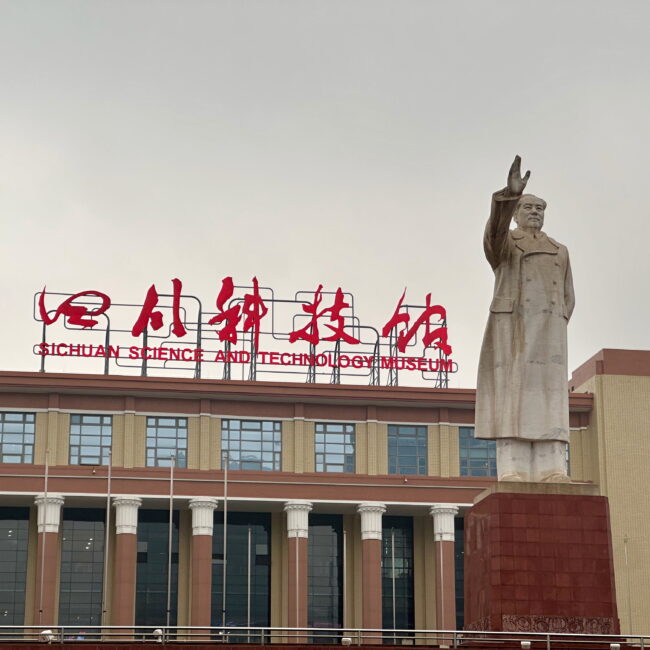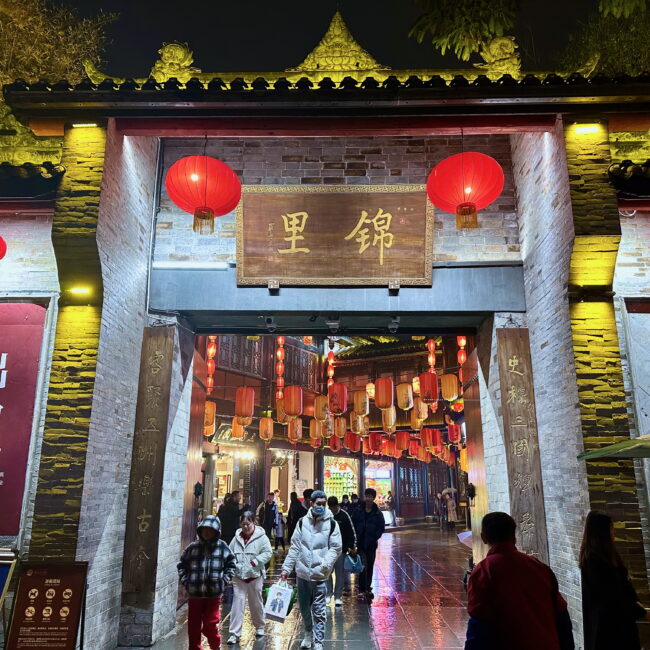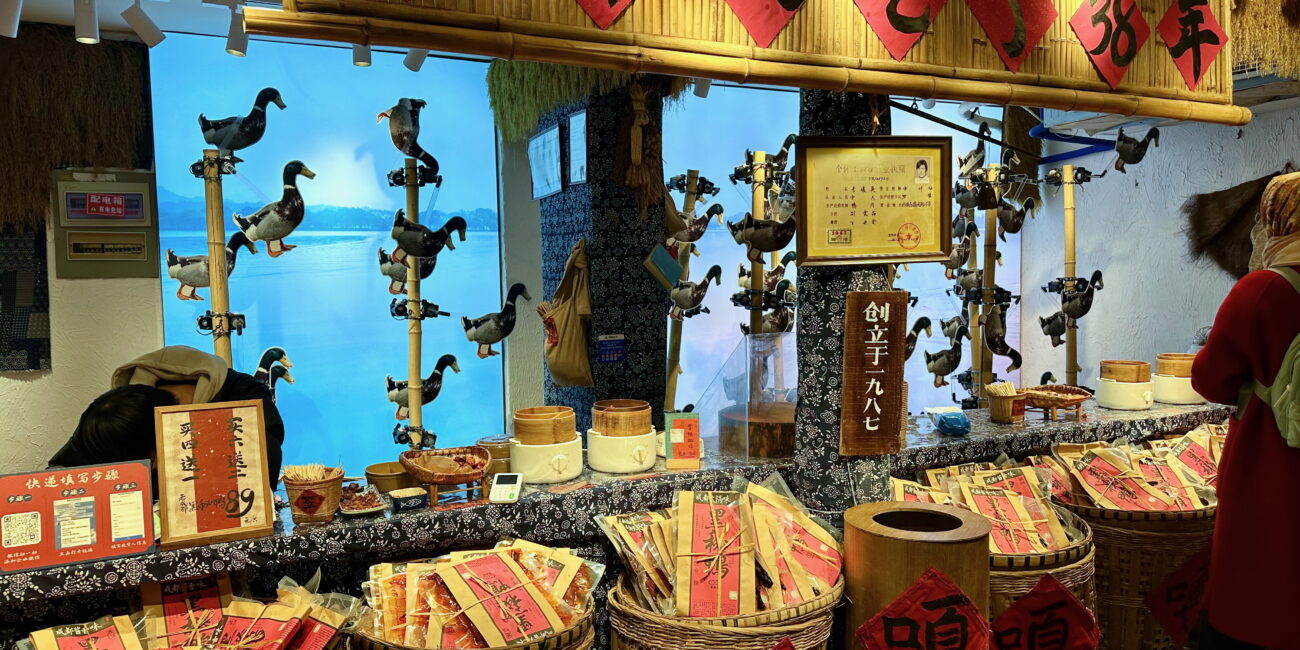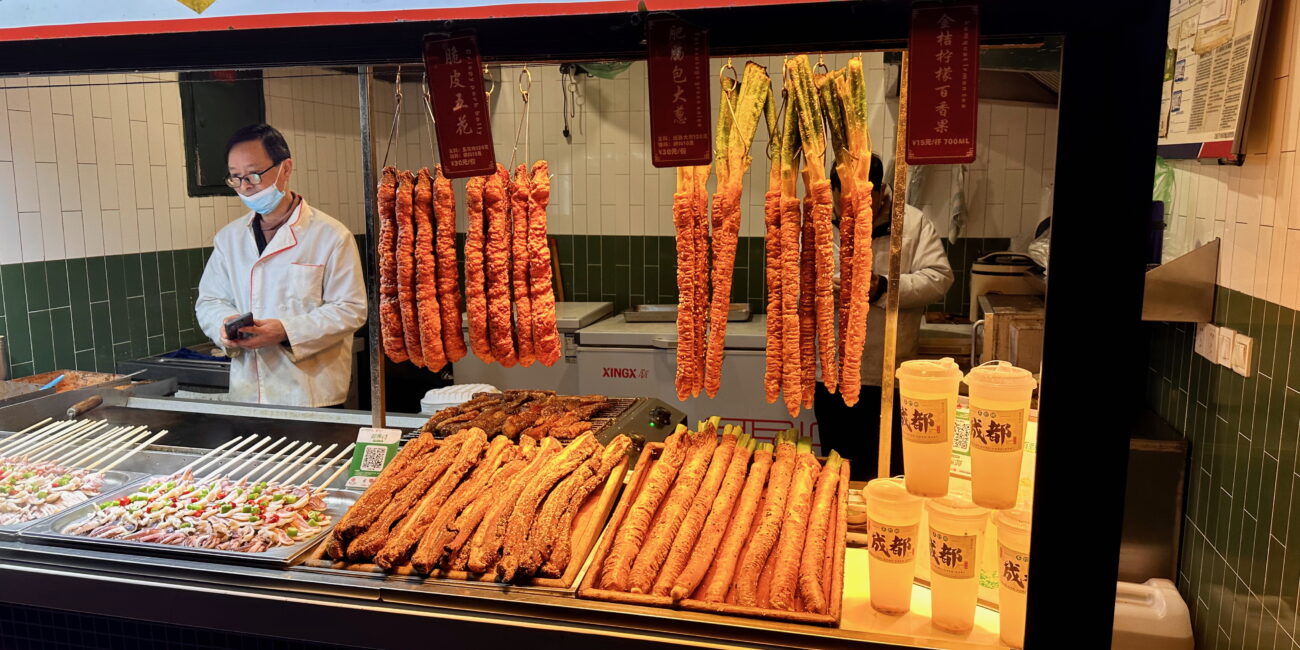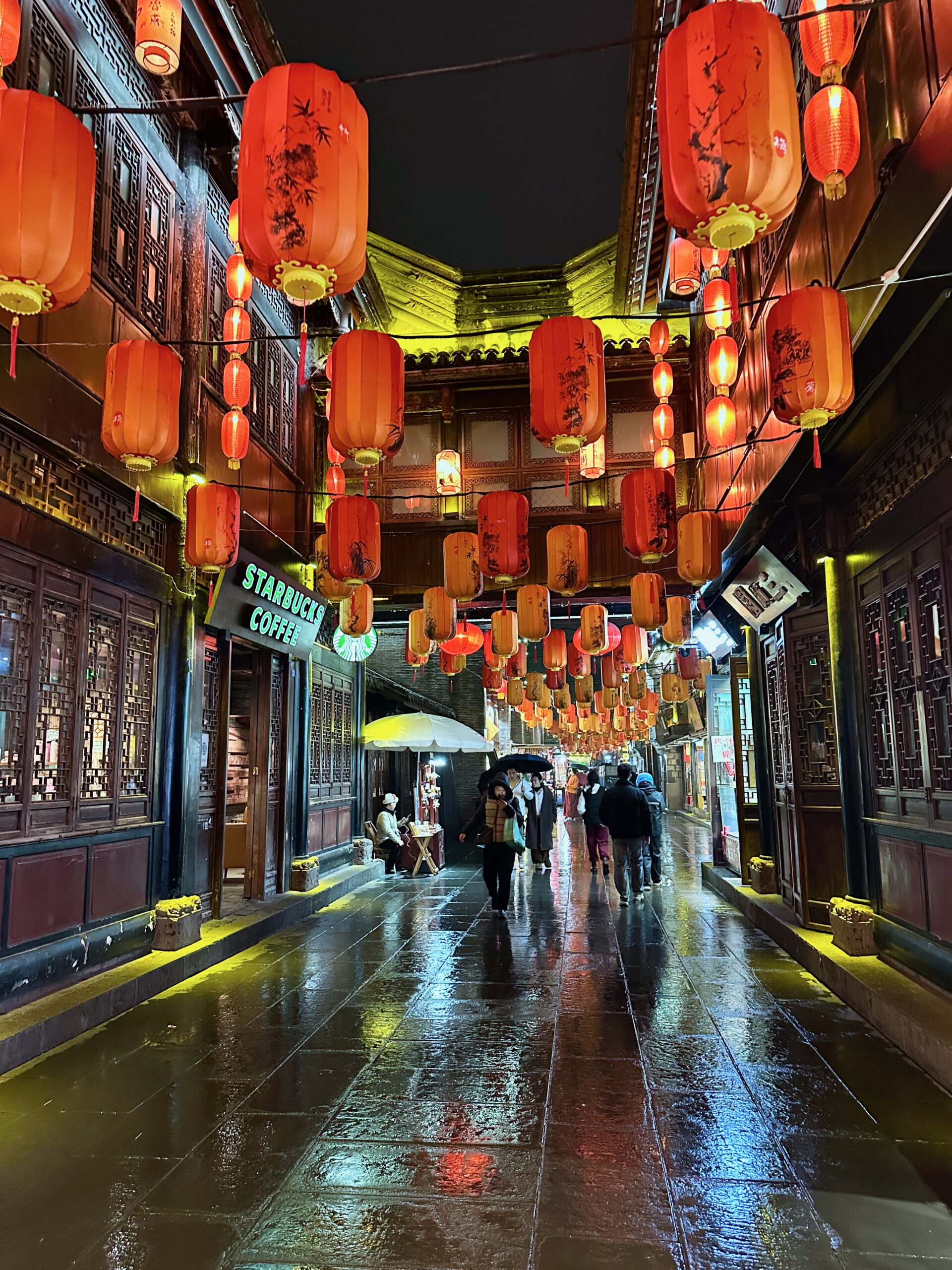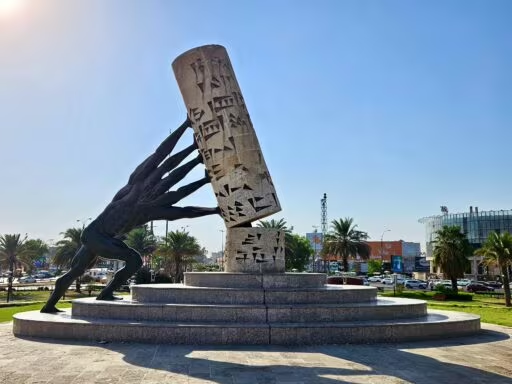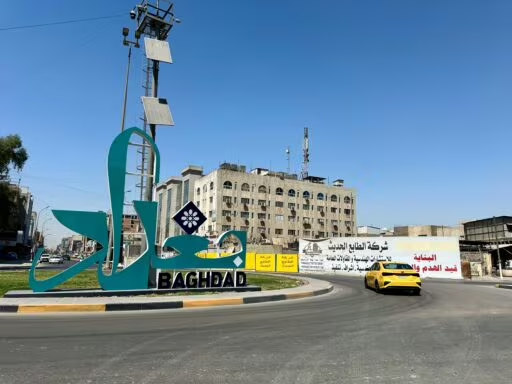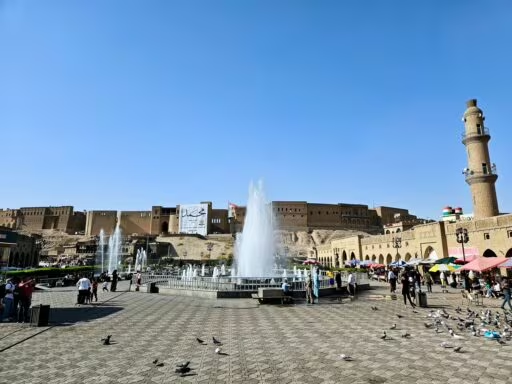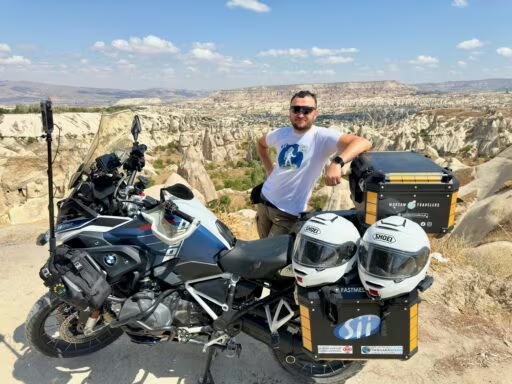This post is also available in:
Polski
Hello 👋
Today, we’re diving into a completely unplanned adventure – China. It kind of sneaked into our travel calendar by accident. We scored a great deal on tickets to Thailand, and since our layover was in Chengdu, we thought – why not make the most of it and explore a bit of the city? We knew China was a different world – with its own pace, rules, and systems – but hearing about it and experiencing it firsthand are two completely different things. And yeah, that first encounter? One big “wow”. To top it off, Chengdu greeted us with rain, which gave the whole visit a unique, moody vibe.
Where is Chengdu located?
Chengdu is the capital of Sichuan province, nestled in the southwest of China. The city sits in a literal bowl—surrounded by mountains, which gives it a pretty unique climate. It’s warm, humid, and often covered in a misty haze that makes everything look a bit dreamy (or just damp, depending on how you see it). It’s one of those massive Chinese cities, but compared to places like Beijing or Shanghai, Chengdu feels more laid-back. And, of course, it’s famous for two things: insanely spicy food and pandas! 🐼🔥
Departing Poland for China
We’re breaking this trip into a few stages – first, Chengdu, then we continue on to Thailand. What happened next? That’s a story for another post (yes, I’ve been to Phuket before, during the whole pandemic mess – you can read about it here). This time, we wanted to mix business with pleasure – explore a bit, but also work remotely for three weeks. A little adventure, a little productivity – the perfect combo.
Flights to Thailand from Poland during peak season can be ridiculously expensive, so we spent some time hunting for a decent option. We sifted through different routes and departure airports, trying to piece together something that made sense financially. And that’s how Chengdu ended up on our itinerary – not exactly planned, but definitely an interesting twist.
Departure from Warsaw
Just to keep things interesting, we complicated our route a bit. But in the end—considering peak season prices—it actually turned out to be a great deal. That said, after this first leg of the journey, we’ve already got a few thoughts and takeaways… but we’ll get to that later. For now, let’s focus on how we got to Chengdu.
This whole adventure took place in February. Our main flight to China was departing from Milan Malpensa (MXP), but first, we had to get there somehow. We went with Wizz Air to Bergamo (BGY)—tickets were booked back in October, so the prices were still reasonable, even with checked baggage included. Thanks to that, we didn’t have to stress about cramming everything into a carry-on backpack—which, let’s be honest, always turns into a game of Tetris with questionable results.
Transfer in Milan
After landing in Milan, we stayed overnight at Hotel degli Arcimboldi, right next to Bignami metro station (M5)—super convenient, no unnecessary commuting. We grabbed a quick breakfast at Milano Centrale, and for transfers—from Bergamo to the central station and then from Milano Centrale to Malpensa—we went with Terravision. A reliable choice, no need to overthink it.
At Malpensa, Air China hit us with a surprise—our suitcase wasn’t going straight to Phuket. That caught us off guard since we had one reservation, so logically, it should have. But nope, we had to pick it up in Chengdu and check it in again. Oh well. We were already mentally prepared to travel light with just our backpacks, but instead, we got a bonus travel companion—a 20kg suitcase. The perfect third wheel… 😅
Oh, and let’s not forget Warsaw Airport. It was packed to the max, and—of course—I forgot my headphones. Instant frustration level: through the roof. 😤 Fast track? Let’s take it! Jadzia did not even think about it, she even looked happy. 😆
Malpensa wasn’t exactly a breeze either, but at least they have 3D scanners, so no need to unpack half your carry-on. And Okęcie? A glorified barn—still stuck in the past, making you take out electronics and liquids like it’s 2005. 21st century? Not here… 🤷♂️
Flying by plane
We flew on an Air China Airbus A350, and as “special care” passengers, we were kindly asked to confirm our meal preferences, which we had set up earlier on their website. Sounds nice, right? Well, let’s add some context—booking tickets, modifying reservations, or even checking in online was an absolute nightmare. The Air China system is so horrendous, it genuinely feels like razor blades are about to jump out of the drawer on their own. 😵💫
Luckily, the flight itself was pretty comfortable—we had an empty seat in our row, so there was more space than we expected. A handy tip: Air China doesn’t allow charging devices with power banks on board. And as for the Wi-Fi… well, it technically existed, but it worked like it didn’t. 🙃
And just like that, we smoothly landed in Chengdu in the early morning hours.
Passport clearance in Chengdu
The check-in went smoothly, but the arrival form was something else – we had to list every single country we’d been to in the last two years. I mean, sure, that tiny box was definitely big enough to fit it all, right? Then came the usual questions: hotel contact, which hotel, what for – basically a full-on confession session.
Plus, cameras everywhere, tracking your every move—just in case you dared to take a third step with your left foot (because, you know, twice is fine, but three times? Too much). Border control? Silent and efficient. No questions asked, just a quick passport stamp, and we were on our way.
But wait, there’s more! One last baggage scan, because, you know—clearly, all the previous security checks weren’t enough. Who knows? Maybe something illegal magically appeared in our luggage mid-flight? 😅
Visas and documents
When you’re flying internationally with a layover in another country, it’s always a good idea to check whether you need a visa or if there are any weird transit rules. Otherwise, instead of smoothly heading to your next flight, you might find yourself stuck in a bureaucratic nightmare for no good reason.
Luckily, in our case, it was pretty straightforward. China allows visa-free entry for up to 30 days until the end of 2025, so no stress there. Thailand? Even better. We can stay for up to 60 days without a visa, which is super convenient.
Accommodation
Looking for accommodation in a country you know nothing about can feel a bit like traveling back to pre-internet times—sure, you have access to the web, but with so many restrictions, you start wondering if it’s really the 21st century. We’ll get to China’s infamous firewall later, but for now—just picking a hotel was already an interesting experience.
The plan was simple—find something close to the metro, so we could easily get to the airport in the morning. Sounds straightforward, right? Well, not exactly. Air China technically offers a free stopover hotel, but we didn’t manage to snag a spot. Plus, the location of their hotel wasn’t great for sightseeing, so even if we had the option, we probably wouldn’t have taken it anyway.
In the end, we went with Skytel Hotel Chengdu-City Center—close to the train station and the last stop of Metro Line 18, which connects directly to the airport. On the map, it looked perfect. – In practice? Well… 20-minute walk in the rain with suitcases was not the best option. The hotel itself is it was right on the main road, but getting there from the station was such a hassle that we just gave up and ordered DiDi (China’s version of Uber). Cost? Around 6 PLN, and within minutes, we were at the hotel. Much easier.
And here came a pleasant surprise! The staff let us check in early—at 9:00 AM—free of charge. 🎉. Normally, the registration started from 15:00, so a big plus for them. Room? Super. Internet? For China – cool, for MS Teams was enough, but access to the outside world…well, slightly uphill. 😅
Traffic conditions
If you’re thinking about renting a car in China, there’s one important thing to know—an international driver’s license isn’t valid here. To legally drive, you’ll need a Chinese driver’s license. On top of that, Chinese traffic laws heavily favor pedestrians and cyclists. Even a minor accident can lead to hefty compensation claims and long legal battles. However, from what we’ve read, many drivers don’t actually yield to pedestrians, even at crosswalks or green lights. That said, we didn’t experience this ourselves—everywhere we went, cars stopped for us at intersections like they were supposed to. So, either we got lucky, or it really depends on where you are.
DiDi
Because of these restrictions and the unique nature of traffic in China, many tourists opt for other means of transportation. One of the most popular choices is DiDi—China’s version of Uber. The app is available in English and makes booking rides quick and hassle-free, all at reasonable prices. DiDi offers a variety of services, including taxis, private cars, and even rental bikes, making it a super convenient option for getting around.
Instead of juggling multiple apps, we decided to use DiDi directly through Alipay. And honestly? Best decision ever. If you don’t want to mess around with extra setups and configurations, this is the way to go.
I had Alipay linked to my foreign card, so all our DiDi rides were charged directly to my account. Jadzia didn’t even need to install the app—everything was handled from my phone. All I had to do was enter the address, book the ride, and the payment went through Alipay automatically. Super easy, zero hassle.
Public transport in Chengdu
The city has two major airports: Chengdu Shuangliu International Airport (CTU), the older one closer to the city center, and Chengdu Tianfu International Airport (TFU), the newer, massive one located further away. We landed at Tianfu and had to find a way to get into the city from there.
What’s the cheapest way to get from the airport? The easiest and most budget-friendly option is the metro. From Tianfu Airport, you can take Line 18, which goes directly into the city. We got off at South Railway Station. The metro is fast, efficient, and super cheap—ticket prices depend on the distance, but we’re talking just a few yuan. From there, you just transfer to your preferred metro line and keep going. Simple and smooth.
Tickets can be purchased at ticket machines on metro stations, but if you plan on using public transport more often, it’s better to get a Tianfutong Pass—a prepaid card that makes traveling much easier.
What else besides the subway?
We also saw buses going to different parts of the city, but since we didn’t use them, we won’t pretend to know how they work. Probably cheap, probably get you where you need to go—but also probably take forever.
We pretty much only used the metro to get from the airport to the city and then to our hotel. Other than that, whenever we needed to get somewhere, DiDi was so cheap that it just didn’t make sense to bother with buses or figuring out connections. The metro is great, but for places a bit further out, the journey could take twice as long as a car ride—so DiDi was just the more convenient option.
SIM card
We went with an eSIM from T-SIM.HK, which we bought before our trip. 3GB for around 18 PLN—pretty decent for a quick and hassle-free internet setup. We configured everything at the airport while we still had Wi-Fi, so there was no stress about fiddling with settings once we were in the city.
Why didn’t we buy a local SIM card? Because getting one in China isn’t as easy as in other countries. You need to show your passport, register a phone number, and sometimes even do a facial scan. On top of that, availability is an issue—you can’t just walk into any kiosk and grab a SIM card on the spot. We didn’t have the time or patience for unnecessary bureaucracy, so eSIM was the perfect hassle-free solution.
And roaming? Yeah… with a Polish SIM, it’s just insane. The prices are so ridiculously high that we didn’t even consider it an option. Much better to get an eSIM or, if you need more data, find a local provider once you’re there.
China’s Great Firewall
And now, we get to the real highlight of this post—something every traveler to China should sort out before their trip. The Great Chinese Firewall is no joke. It’s a massive internet blockade that effectively cuts off access to most Western services, including Google, Facebook, Instagram, and even some banking apps. Long story short—if you’re not prepared, you might find yourself staring at a blank screen with zero connection to the outside world.
VPN is a must. Since I work in IT, I set up several different VPNs in advance, just to have backups in case one got blocked. China constantly cracks down on VPNs, so it’s always smart to have more than one option ready. Most importantly—install your VPN before you fly. Once you’re in China, downloading one might be impossible.
What about the maps?
Well, this is where the fun begins. Google Maps? Forget. It doesn’t work. Apple Maps? It can handle it, but accuracy varies. Baidu Maps? Najlepsza opcja, ale… tylko po chińsku. I nie, nie ma tam ani grama angielskiego. Możesz próbować tłumaczyć interfejs na żywo przez Google Lens, ale powodzenia z tym.
We relied on Apple Maps, which worked surprisingly well. But if you need detailed info on public transport or walking routes, Baidu Maps is the way to go. The only catch? You’ll have to wrestle with Chinese characters, since the app doesn’t have an English version.
Food
Let’s be real—finding food that suited us was a bit of a challenge. Not because there’s a lack of food in Chengdu (quite the opposite—there’s an overwhelming amount), but more due to our picky taste buds and the language barrier.
For breakfast, we played it safe—Starbucks. No surprises for our stomachs, just a classic coffee, something sweet, and we were good to go.
For lunch… a little less classic, but still a safe choice. We went for instant noodle soup from Family Mart—a tomato-flavored one. And honestly? It was surprisingly good. Oh, and cheap. Sometimes, the simplest solutions really are the best.
There was no dinner. We just weren’t that hungry, and the food options we came across didn’t really win us over.
Breakfast before our flight was a bit more substantial—classic McDonald’s morning menu at the airport. One thing to note: McDonald’s in Chengdu is before security, so if you’re planning a quick meal before your flight, grab it before heading through security.
Exchange office or ATM?
Under normal circumstances, when traveling to a new country, you’d probably wonder whether to exchange cash at a currency exchange or withdraw it from an ATM. But not in China. Here, cash is practically dead, and everything—literally everything—is handled through mobile payments.
We didn’t even bother looking for a currency exchange or ATM because we handled all our payments through Alipay, which we mentioned earlier. From shopping in stores, to the metro, to coffee at Starbucks—we just scanned the QR code and done.
What surprised us? In many places, the only payment option was through an app. The terminals were either hidden under the counter, or there was no option to pay with a card at all.It’s not that you couldn’t find them – they just weren’t being used at all.
We didn’t even bother looking for a currency exchange or ATM because we handled all our payments through Alipay, which we mentioned earlier. From shopping in stores, to the metro, to paying at shops—we just scanned the QR code and done.
ATMs do exist in China and are available in larger cities, but here’s the catch—not every ATM accepts foreign cards. You need to look for those that have the Visa or MasterCard logo, and even if you find one, you might face high fees.
What is the best thing to do?
Alipay and WeChat Pay Alipay and WeChat Pay are the holy grail of payments in China. We linked our card to Alipay and paid for everything with ease—from metro tickets, to coffee at Starbucks, to entrance tickets for panda viewing. No stress, no searching for ATMs, no hassle.
Of course, this isn’t our stance that replacing cash entirely with digital payments is a good thing. While using Alipay was convenient, the fact that in many places you literally can’t pay with cash is definitely questionable. Lack of alternatives is no longer a choice. You can marvel at the technology, but this complete control over payments also has its darker side.
Climate and weather conditions
During our stay in Chengdu in February, the city greeted us with rainy weather. Although February is considered a month with low rainfall—averaging about 11 mm of rain—the weather still managed to surprise us.
The temperatures during this period are quite mild. The average daytime temperature in February is around 14°C, with nighttime drops to about 6°C. Even though the winter in Chengdu is relatively mild, it’s still worth being prepared for colder days and bringing along warmer clothes.
Chengdu has a subtropical monsoon climate, with four distinct seasons. Summers are hot and humid, with temperatures reaching up to 33°C, while winters are mild and damp. Rainfall is concentrated mainly during the summer months, especially in July and August.
An interesting fact about Chengdu is that it has one of the lowest annual sunshine totals in China, with an average of 1006 hours of sunlight per year. This means the city is often shrouded in clouds, giving it a unique, melancholic atmosphere.
Safety
In a country where surveillance is running at full speed, the question isn’t “Is it safe?”, but rather “Which side should I be worried about?” xD. But honestly, we didn’t feel threatened at all. Chengdu is a very calm city, and when it came to tourists, most of the ones we met were from other regions of China, rather than from our neck of the woods.
Safety in China is a bit of a complex topic. On one hand, street crime is very low, but on the other—you’re being watched every step of the way. Cameras are literally everywhere. On train stations, in the metro, on the streets, in hotels, and even at the entrances to some attractions. Facial recognition? Standard. It can definitely make you feel a bit uncomfortable.
What to watch out for?
- Pickpockets are pretty rare, but it’s better not to tempt fate—especially in crowded places like the metro or markets.
- Politics is a taboo topic—if you want to have a casual chat with locals, stick to neutral subjects. Criticizing the government? Maybe better to choose a different topic. 😉
- Respect the local rules—China doesn’t take regulations and controls lightly. Don’t try to film places marked as “No Photography”, don’t attempt to bypass entry rules, and avoid doing anything that could draw attention from authorities.
Places we visited in Chengdu
We won’t pretend—we didn’t do much sightseeing. After a morning flight and a whole day on our feet, we were so exhausted that once we hit the bed around midnight, we were out like a light. But despite that, we did manage to check out three places, which gave us a bit of an idea of what the city is all about.
Chengdu Research Base of Giant Panda Breeding
The first stop was the famous panda base, because, well, when you’re in Chengdu, it’s all about the pandas. At first glance, it felt like a panda amusement park—decorations everywhere, souvenirs, and Chinese visitors literally squealing with excitement at the sight of the pandas. Was it as spectacular as expected? Not exactly. We saw maybe three pandas, and they weren’t exactly putting on a show, but the Chinese visitors were still absolutely thrilled.
What surprised us? When buying tickets, our passport data was written down. Seriously. Just like that, without explanation. We felt that in China, your footprint stays everywhere, even if you just want to see a bear eating bamboo.
Tianfu Square
Next, we stopped by Tianfu Square, which is basically the main square in Chengdu. A lot of space, modern architecture, and, of course, a huge statue of Mao Zedong. It’s kind of the center of city life, but I wouldn’t say it was all that impressive. It’s just a big square that feels important in the city’s historical context.
Jinli Street
To end the day, we headed to Jinli Street (锦里), a typical Chinese street with that “old China” vibe. Stalls, lanterns, tons of people, all sorts of snacks and little shops. In the evening, it looked really cool—a classic touristy spot, where you feel like you’re in a kung fu movie.
Summary
One day in Chengdu is definitely too short to fully get to know the city, but enough to feel the cultural difference. From the different lifestyle, to the language, to the ubiquitous digitization—it’s a completely different world from what we’re used to.
Chengdu left us with mixed feelings. On one hand, there was a sense of curiosity, because everything here is so different—from the signs on the streets, to the attitudes of the people, to facial recognition and paying for everything with your phone. On the other hand, we were a bit disappointed because we expected the younger generation to have a better grasp of English. But here’s the surprise—English practically doesn’t exist. Even in larger tourist spots or among younger people, English was, to put it mildly, symbolic. Why? Maybe China is self-sufficient enough that they don’t feel the need to invest in foreign languages?
What’s a plus? It was cheap. We didn’t feel the pain in our wallets like we do in places like Switzerland. Transport, food, accommodation—everything turned out to be surprisingly affordable.
It would definitely be worth coming back here someday with more time and a different mindset. This time, it was just a stopover on the way to Thailand—we had a morning flight to Phuket, but that’s a story for another post. Now, it’s time to see what the post-pandemic reality looks like. 🚀

